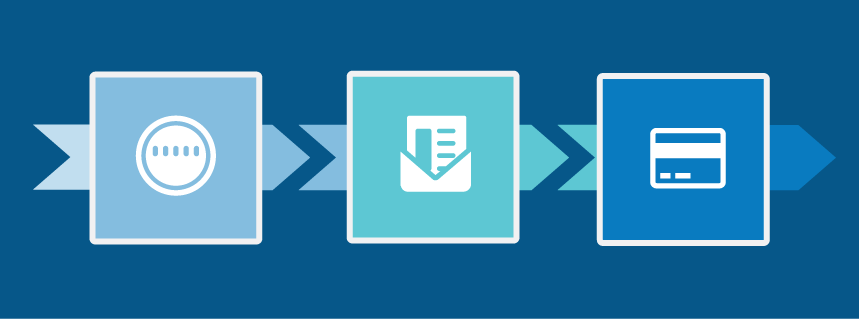
When speaking with anyone who works for a water utility their priorities quickly become apparent. Water quality and reliability, intractably related to each other, form the core mission of any water utility. Without maintaining water quality and safety, customers may become sick or worse. Water suppliers in the United States take great pride in the reliability of service that they have provided for more than a century. No other country in the world has delivered such an extended period of reliability with 24×7 on demand water services. There are few people that live in the U.S. that can recount EVER turning on the tap and not receiving safe, life nourishing drinking water.
And yet the water industry has, in many ways, been a victim of its own success. Customers have come to take clean, reliable drinking water for granted. Most end-users have no comprehension of the effort and cost it takes to deliver a high quality, reliable service on such a consistent basis. The only time customers communicate with their water supplier is when they have a complaint: High bills, service outages, or water quality concerns. Consequently, water utilities tend to measure customer satisfaction by the lack of communication from their end-users. Yet this ‘silent service provider’ model is no longer viable in the 21st century in an age of always-connected customers. Modern customers expect self-service offerings, digital access, data transparency, and convenience.
Historically, the only time customers communicate with their water supplier is when they have a complaint.
This directly leads to the next highest priority of any water utility – revenue generation. While quality and reliability will always remain the top priority, no water supplier can build a resilient operation without predictable cash flows. Known in the industry as ‘meter-to-cash‘, it is critical that the utility reliably measure water consumption, generate an accurate bill, and consistently collect revenues from customers for water services rendered. It turns out that is not as easy to reliably manage the meter-to-cash process as one might think.
There are multiple steps in the meter-to-cash process which requires the tight integration of several disparate systems including meter data management, bill generation, bill delivery, and payment collection. There are several places where the hand-off of data between systems can break down. This can result in either overcharging or undercharging customers for water services. The former results in angry customers and bad publicity, while the latter yields lower than expected revenue which can impact future operations. It is critical that each utility has a way to consistently validate billed consumption to ensure accuracy and timeliness of revenue collections.
First, meters need to be right-sized for the appropriate, expected flow demand. For example, if a residential household which uses 350 GPD is accidentally fitted with a meter designed to measure industrial water flows of at least 5000 GPD, then the meter will likely mis-read the comparatively low water flow and thus the billing read may be underestimated. Next, the meter register multiplier must be accurately configured in the billing or customer information system. Each meter manufacturer may have a different cycle interval and the billing system needs to understand the units of measurement in order to accurately generate billed consumption. If the multiplier is mis-configured, bills may dramatically over or under charge customers resulting in frustration or lost revenue.
Assuming the meter data to CIS interface is working properly, the billing system needs access to accurate rate tariffs for each meter class to ensure the billing read is applied to the appropriate pricing structure. The bill then needs to be designed in a manner that is clear to the end-user and is delivered reliably through the postal service or, ideally, electronic means. Customers then need an easy way to pay their bill, ideally through a digital transaction which provides both convenience and security. In a perfect world, customers enroll in auto-pay which reduces payment delinquencies and improves cash flow for the utility.
Finally, when customers have questions or concerns about their bill (which is the number one reason for calls to the utility customer service center), service reps need to have detailed historical information at their fingertips to quickly address customer concerns and help them understand the reason for their billed water use. This helps educate customers on their water use and increases the likelihood that they will pay their bill in a timely fashion which is critical for a reliable meter-to-cash process.
Orchestrating the data and systems needed for to ensure that measurement, billing, and collection processes work seamlessly takes a solid understanding of the technical aspects of the process. Also, better outcomes are achieved when systems that are integrated to work together also have the ability to notify users in the event that something goes wrong with the process. Meter data, billing, and payment data systems are often siloed within a utility and unearthing actionable, cross-functional analytics can be challenging or even impossible for utility staff.
Orchestrating the systems to ensure reliable measurement, billing, and collection takes a solid understanding of the technical aspects of the process.
WaterSmart software is an expert at optimizing the meter-to-cash process by deploying a customer self-service and engagement platform on top of existing meter management, billing, and payment solutions. By consolidating data, analytics, and customer billing & payment interfaces in a single system, utility staff can more easily access accurate and timely information. Considering the WaterSmart platform to supplement (not replace) existing MDM and billing systems can increase reliability and reduce delinquencies while improving cash flows and helping secure long-term financial resiliency.


